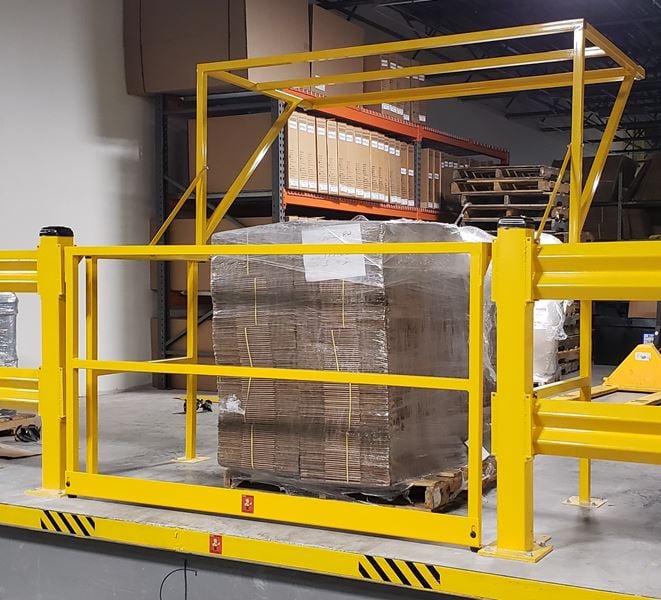Mezzanine gates, also known as pallet gates or safety gates, are protective barriers used on elevated work platforms or mezzanines to provide fall protection and safe access for workers and materials. They're crucial in warehouse, manufacturing, and industrial environments where materials are moved between levels.
Purpose
The main purpose of mezzanine gates is to:
-
Prevent falls from unguarded edges on elevated platforms.
-
Provide controlled access for loading and unloading pallets or materials.
-
Comply with safety regulations, such as OSHA or ANSI standards.
Common Types of Mezzanine Gates
-
Pivot or Counterbalanced Gates
-
These gates swing in a teeter-totter fashion: as one side opens for forklift loading, the other side closes to protect workers.
-
Ensures that one side is always closed.
-
Often referred to as “dual-gate” systems.
-
-
Swing Gates
-
Open like a door, usually manually.
-
Simpler and more cost-effective, but require the operator to manually close them, so they pose more risk if left open.
-
-
Sliding Gates
-
Slide open horizontally.
-
Useful where space is tight.
-
Less automated than pivot gates, but still secure.
-
-
Lift-Out or Drop Bar Gates
-
Removable bars or panels that can be taken out when access is needed.
-
Least safe, often not OSHA-compliant if used alone.
-
-
Electric or Powered Gates
-
Operated by buttons, sensors, or remotes.
-
Ideal for high-throughput areas or where automation is critical.
-
Key Safety Features
-
Self-closing or automatically controlled mechanisms.
-
Guardrails and toe boards integrated.
-
Clear visibility and labeling.
-
Durable materials (steel, aluminum, etc.).
Regulatory Compliance
In the U.S., mezzanine gates often need to comply with:
-
OSHA Standard 1910.28(b)(1) – fall protection for unprotected sides and edges.
-
ANSI MH28.3 – for safety in work platforms and material handling.
Applications
-
Warehouses and distribution centers
-
Manufacturing facilities
-
Material lifts and conveyor transfer points
-
Elevated storage and work platforms

